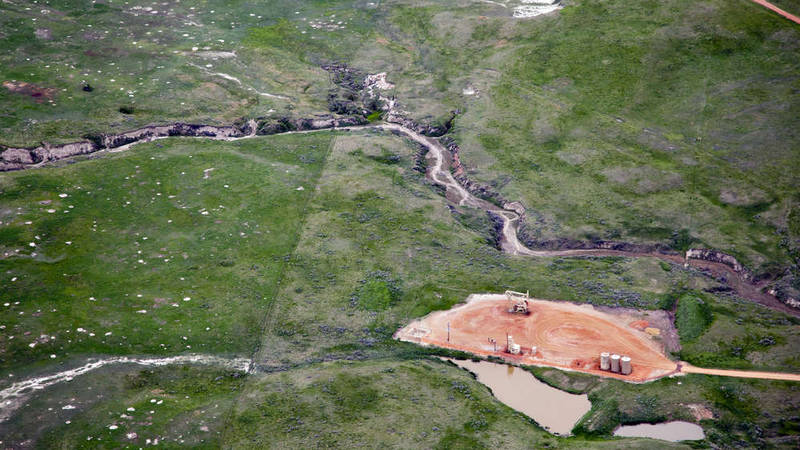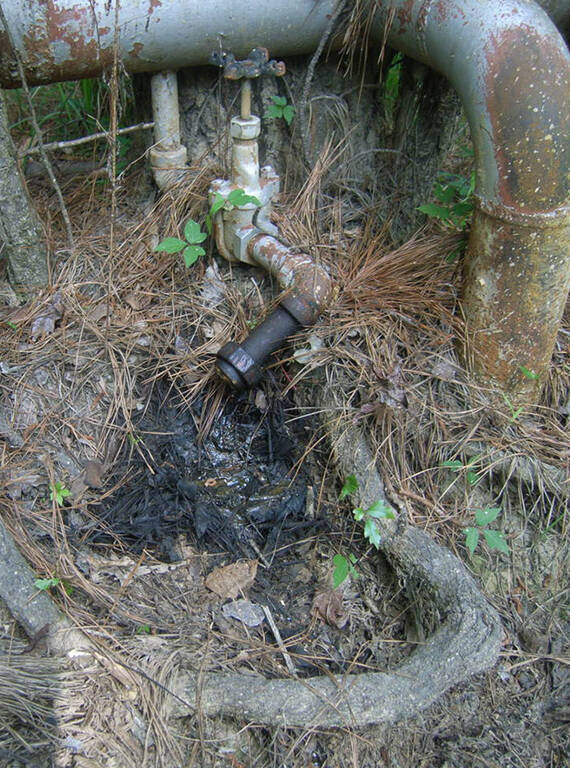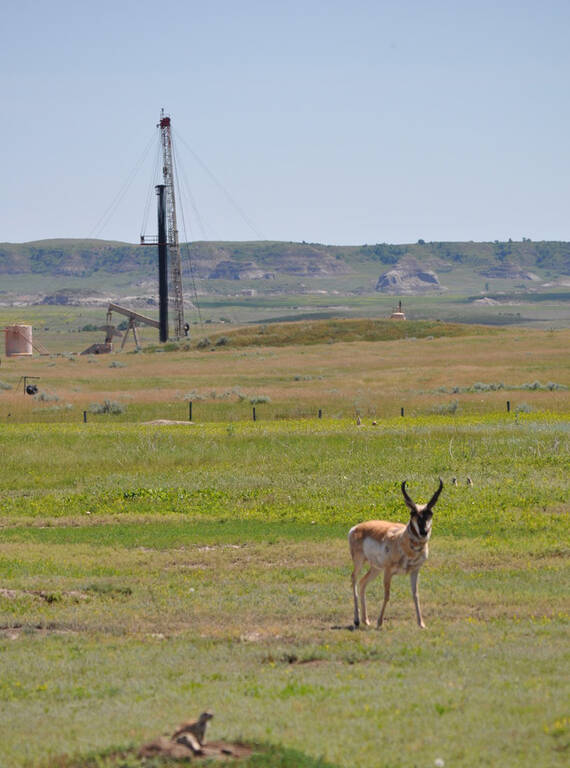Did you know 86% of lands managed by the Bureau of Land Management are open to oil and gas leasing and fossil fuel extraction? We now have a chance to reform how oil and gas drilling takes place on millions of acres of public land.
EDITOR’S NOTE: The Bureau of Land Management released a final rule April 12, 2024, updating its oil and gas leasing practices so that future oil and gas development could be steered away from national parks.
For the first time in more than 35 years, the Bureau of Land Management has proposed reforming its onshore oil and gas leasing program to prevent poorly sited oil and gas drilling on public lands.
NPCA supports these commonsense updates because they steer future extraction away from national parks and advance our nation’s climate and conservation objectives — especially when combined with the bureau’s proposed public lands rule, which places conservation on equal footing with other land uses.
Specifically, the proposed reforms would ensure future leasing doesn’t occur near places with sensitive cultural, wildlife or recreational resources. The reforms also would keep future abandoned wells, sometimes referred to as “orphaned wells,” from contaminating groundwater by requiring operators to set aside adequate funding to clean up hazardous sites, and they formalize fiscal reforms directed by Congress in the Inflation Reduction Act.
Why are these updates needed?
An astounding 86% of lands managed by the Bureau of Land Management are open to oil and gas development. Right now, more than 12.4 million acres of public land are currently leased to oil and gas companies for fossil fuel extraction, even though many of these lands provide Western communities with clean water, support crucial wildlife habitat and contain immense cultural resources.
The majority of these federal land leases are in Wyoming and New Mexico, which each have several national park sites, followed by Utah, Colorado, Montana and North Dakota.
Leaving a large proportion of our public lands open to oil and gas development is reckless — plus, it contradicts climate goals set forth by the Biden administration that would reduce our country’s fossil fuel emissions. Oil, gas and coal produced on publicly managed lands and waters already account for 25% of U.S. carbon emissions. Our public lands should be part of the climate solution, not part of the problem.
The proposed reforms aren’t perfect. NPCA would like to see more stringent steps to directly curtail fossil fuel emissions from oil and gas development. But we believe the latest proposal is an essential step toward developing a climate plan for our public lands.
99% of submitted comments encouraged the Bureau of Land Management to adopt the oil and gas reforms.
In a 60-day comment period on the proposed reforms that ended in September, 99% of submitted comments encouraged the bureau to adopt the oil and gas reforms, according to an analysis conducted by the Center for Western Priorities. The BLM is reviewing those comments, and a final rule is expected in early 2024. In line with this overwhelming public support, NPCA encourages bureau leaders to adopt the proposed rules promptly.
The health of our parks’ natural and cultural resources is at stake if oil and gas development is allowed to continue at the status quo. NPCA sees five distinct benefits to national parks and the public if these proposed leasing reforms are enacted:
1. Clean water and air
The proximity of most oil and gas leases to national parks means that these leases directly contribute to adverse environmental impacts, which the National Park System must bear.
Public lands hold aquifers that can be polluted by wells that companies have abandoned, sometimes called “orphaned wells.” In 2021, NPCA and FracTracker Alliance identified 31,727 abandoned wells within 30 miles of a national park site.

Oil and gas development near Theodore Roosevelt National Park in North Dakota.
© Chris Boyer / Kestrel Aerial ServicesIn New Mexico, wells could contaminate water at Carlsbad Caverns National Park, where a system of underground caves filter sources of local groundwater.
Dirty air ruins scenic views, harms wildlife and historic sites, and affects the health of visitors. For nearby communities, oil and gas development has degraded air quality standards to those seen in major cities across the West, creating serious public health concerns and exacerbating the climate crisis. Climate change has increased the frequency and intensity of wildfires over natural levels across the western U.S., including at Yosemite National Park — further worsening air quality.
2. Environmental accountability
Currently, the oil and gas industry is not held accountable in cleaning up its well sites. This can affect the health of people living in nearby communities who are exposed to polluted air and contaminated water.

Oil leaks from abandoned equipment at Big Thicket National Preserve in 2008.
NPSThe proposed oil and gas rule will ensure that operators provide adequate funding to clean up dangerous and contaminated sites, preventing future havoc caused by unchecked and abandoned wells. It will also ensure leasing does not occur in sensitive and sacred cultural areas and areas important to wildlife.
For example, the National Park Service has identified active gas wells and the potential for new ones near Aztec Ruins National Monument among threats to the well-preserved 12th-century Ancestral Puebloan great house community and its surrounding natural resources.
3. Wildlife protection

A pronghorn at Theodore Roosevelt National Park. Oil and gas development has also affected the species at Grand Teton National Park and in the Greater Yellowstone ecosystem.
NPS/Joe BruceLimiting oil and gas drilling near our national parks is paramount to safeguarding distinct and diverse ecosystems.
These landscapes serve as critical habitats for a wide array of plant and animal species, many of which are rare, threatened or endangered.
In Grand Teton National Park and in the Greater Yellowstone ecosystem in Wyoming, for example, oil and gas development disrupts the habitat and migration routes of mule deer, pronghorn and other game. The mule deer in particular has suffered major declines in its populations over the past decade due to harmful oil and gas leasing in its range.
4. Cultural and historical resources preservation
Many national parks and their connected landscapes hold historical and cultural significance for Indigenous and other communities, especially in the Four Corners region of the Southwest where oil and gas drilling takes place on millions of acres.
Limiting drilling in these and surrounding areas respects these sacred sites and ensures a longstanding preservation of history and cultural heritage. Utah’s Dinosaur National Monument, for example, protects more than 800 paleontological sites with embedded fossils. Bandelier and Bears Ears national monuments, Chaco Culture National Historical Park, and Mesa Verde and Canyonlands national parks all preserve world-renowned cultural landscapes in their respective Western states.
5. Park visitor experience
Oil and gas drilling within or near parks dramatically changes the park experience. In addition to the hazy skies and air pollution described above, fossil fuel extraction disrupts dark skies with industrial lighting and can even impact park safety.
Excessive light pollution can compromise the educational interpretation presented in many national parks, such as the celestial calendars built at Chaco Culture National Historical Park in New Mexico. The National Park Service has warned that continued nearby drilling at Carlsbad Caverns National Park can leak gas or fluids into cave passages, threatening safety as visitors hike through the caverns.
Beyond the scope of these proposed reforms, NPCA encourages the Bureau of Land Management and the Biden administration to think boldly about complementary actions that would advance our nation’s climate and conservation objectives. These could include withdrawing certain areas from oil and gas development to protect certain areas or even designating more national monuments, which would take our lands with the highest conservation value off the table for future oil and gas leasing.
These oil and gas leasing reforms, however, are a major step forward in public lands management. They begin to align land usage with our national climate goals to address the urgent climate crisis, which are actions needed now more than ever.
Stay On Top of News
Our email newsletter shares the latest on parks.
About the authors
-
 Beau Kiklis Associate Director, Energy and Landscape Conservation Program
Beau Kiklis Associate Director, Energy and Landscape Conservation ProgramBeau manages campaigns to advance NPCA's public lands conservation priorities by ensuring energy projects are sited appropriately and the landscapes surrounding national parks are managed for conservation.
-
 Daniel Hart Director of Clean Energy and Climate Policy
Daniel Hart Director of Clean Energy and Climate PolicyAs the Director of Clean Energy and Climate Resiliency Policy for the Government Affairs team, Daniel advocates for a clean energy transition on public lands and waters as well as climate policies to help protect and preserve parks.